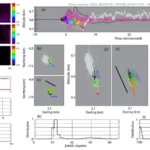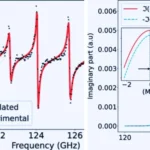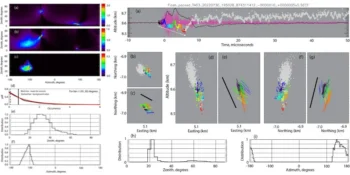Key Points
- Gallium nitride (GaN) electronics show promise for operating in extreme temperatures, such as those on Venus.
- Researchers from MIT and other institutions found that GaN and its ohmic contacts remain stable at 500 degrees Celsius for up to 48 hours.
- The study involved creating GaN devices and testing their resistance and structural integrity under extreme heat.
- Findings suggest GaN could be used in high-temperature transistors for applications like Venus exploration and geothermal energy extraction.
The surface of Venus, with its scorching temperatures reaching up to 480 degrees Celsius, remains a formidable challenge for human and robotic explorers. Traditional silicon-based electronics falter in extreme conditions and cannot operate effectively for long periods. However, recent advancements in gallium nitride (GaN) technology could change this scenario, offering a new hope for high-temperature applications, including Venus exploration.
Researchers have been investigating GaN’s potential to withstand temperatures over 500 degrees Celsius. Gallium nitride, already utilized in some terrestrial electronics like phone chargers and cell phone towers, shows promise in conditions where silicon fails. Despite its established use, GaN’s behavior at temperatures exceeding 300 degrees Celsius remains largely unexplored until now.
A recent study published in Applied Physics Letters represents a significant step in understanding GaN’s high-temperature properties. The research team focused on the performance of ohmic contacts—crucial components that connect semiconductor devices to external circuits—under extreme heat. Surprisingly, these contacts maintained structural integrity even after exposure to 500 degrees Celsius for 48 hours.
The study’s lead author, John Niroula, an electrical engineering and computer science (EECS) graduate student at MIT, emphasized the importance of this research. “Transistors are the heart of most modern electronics, but we didn’t want to jump straight to making a GaN transistor because so much could go wrong. We first wanted to ensure the material and contacts could survive and understand how they change with temperature increases.”
The researchers utilized facilities at MIT.nano to create GaN devices known as transfer length method structures, which allowed them to measure the resistance of both the material and its contacts. Two methods were used to add ohmic contacts: metal deposition and annealing at 825 degrees Celsius and another using a high-temperature technology to regrow highly doped GaN.
Testing was conducted in two phases. Short-term tests at Rice University exposed devices to 500 degrees Celsius on a hot chuck, while long-term experiments at MIT involved placing devices in a specialized furnace for up to 72 hours. Microscopy experts from MIT.nano and the Technology Innovation Institute used transmission electron microscopes to analyze the atomic-level effects of high temperatures on GaN and its contacts.
The results were encouraging. Both methods of creating ohmic contacts proved stable at extreme temperatures, with resistance remaining constant up to 500 degrees Celsius for around 48 hours. Although the material began to degrade after this period, researchers are exploring ways to enhance long-term performance, such as adding protective insulators.
These findings pave the way for developing high-temperature GaN transistors, potentially revolutionizing electronics for extreme environments like Venus. This research, funded by several organizations, including the U.S. Air Force Office of Scientific Research and Intel Corporation, highlights the systematic approach from material-level insights to circuit-level impacts, promising significant advancements in high-temperature microelectronics.










